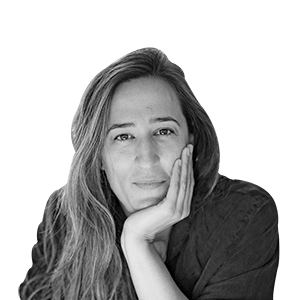Ana Hospital: "She cried and kept saying, 'Tell me she's not dead.'"
forensic doctor and dentist

Ana Hospital had always imagined dedicating herself to another specialty. In fact, while studying medicine, she worked as a primary care physician in a village, and also in a pediatrician's office. It was in the latter that she met Dr. Narcís Bardalet, who held dual positions as a pediatrician and forensic pathologist. Some days, after the consultation, she would accompany him to body removals. She enjoyed that job more than she imagined, and today she is a forensic doctor at the Institute of Forensic Medicine of Catalonia, a dentist, and a professor at the International University of Catalonia.
Can you tell me about a case you are proud to have helped solve?
— The Cervera murder. A 24-year-old woman was found dead on the train tracks. At first, the case was thought to be suicide, but the autopsy revealed she had been murdered. Months passed, and there was no clear suspect.
How did they solve it?
— Thanks to a bite on his chest, we thought we could make a comparative mold of the groom's teeth, whom the police suspected. A crime with dental evidence had never been solved in Spain.
How much information does our mouth have?
— It's like our black box; enamel is the hardest tissue in the body. When all the soft tissue has been destroyed—in cases of putrefaction or charred bodies—the teeth resist and allow us to conduct studies.
Studies like?
— No two mouths are the same, so we can compare the evidence with dental X-rays and know it's you.
But a prior X-ray must be taken.
— Of course, you should always have something to compare, even when it comes to fingerprints or DNA. This happened to us recently with DANA: many clinics had lost dental information, making it difficult to identify from the teeth.
He's been involved in many disasters, like the tsunami in Thailand. How do you identify people with more than 200,000 victims?
— We work with ante-mortem and post-mortem data.
What does it mean?
— The antemortem team has information from what the family has said about what that person looked like. The postmortem team creates a description of the deceased. And an integration center cross-references the data until it finds matches. And this is where we come in to run tests and see if it was indeed the same person.
Why is it important to identify it?
— To give the victims their names. It's important from a legal perspective, because without a death certificate, you're considered missing. Also from an economic perspective, because as a missing person, you can't transfer businesses, whatever.
Which case has particularly affected you?
— Many... I remember the Castelldefels train accident. When we were collecting data with the Mossos d'Esquadra, a girl told us that her partner had seen the train coming and had pulled her away, but his foot had gotten caught.
Don't some images haunt you?
— They impact you, yes. But they usually impact the living. The first death I ever saw was an autopsy when I was a medical student. All I could think about was not fainting, and I managed perfectly. But when I left, I saw the family and how they were wearing their clothes, and these things really affect me more.
When someone studies medicine, aren't they interested in life, not death?
— Forensic pathologists primarily work with the living, even though we have the image of autopsies. We advise the courts on everything they need: assessing injuries in traffic accidents, preparing psychiatric reports on victims and assailants, removing bodies in cases of sudden death...
And when you know someone has done something disgusting… Doesn't it cost you?
— You have to be objective and assess the state of his mental capacity to assist the courts. It's not an easy job. I remember a man who killed his wife in the street after an argument. We arrested him right there, and later, when I went to see him, he was devastated, crying, and just kept saying, "Tell me she's not dead, tell me she's not dead." And I didn't tell him the truth because at the time, I thought he wasn't ready to hear it.
What do you like most about your job?
— It seems like cold medicine, but on the contrary, it's very humane. You're a public sector helper, and you have to know how to deal with people who are on the edge. I like to contribute my knowledge to solve a case.
